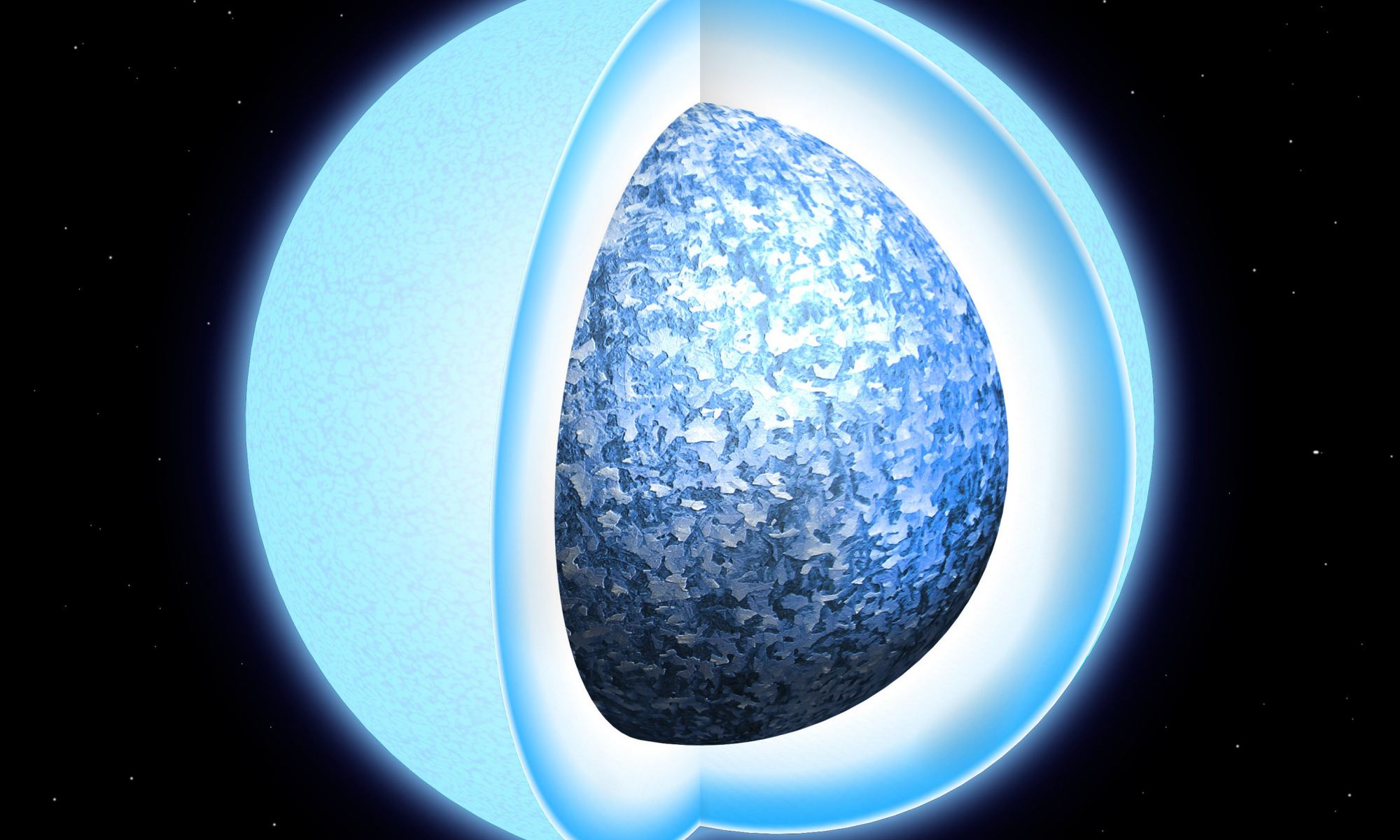In this series we are exploring the weird and wonderful world of astronomy jargon! You’ll feel small but mighty with today’s topic: white dwarf!
A white dwarf is the leftover core of a sun-like star. They are incredibly dense, typically packing more mass than the Sun in a volume no bigger than the Earth. They are held up not by the usual release of energy as in a normal star, but instead by exotic quantum forces.
When stars around the mass of the Sun near the end of their lives, they fuse helium in their cores into carbon and oxygen. Larger stars can continue fusing those elements into even heavier ones, but sun-like stars can’t. Those stars then die, heaving off their outer layers to create a beautiful planetary nebula.
What’s left is the core itself, a lump of carbon and oxygen with a temperature of over a million Kelvin. This exposed core is now called a white dwarf. Since white dwarfs do not generate energy, they eventually cool off and become dimmer with time.
The average density in a white dwarf is around a million times greater than the density of the Sun, and when they were first discovered in the early 1900’s they were the densest things known. Normal stars support themselves against gravitational collapse by continuously releasing energy from fusion. This is not an option for white dwarfs.
Instead, a white dwarf star holds itself up through something called degeneracy pressure. The electrons in the star cannot all occupy the same energy state at the same time. This is a result of their quantum mechanical nature. There is a limit, however, which was discovered by physicist Subrahmanyan Chandrasekhar. If the white dwarf weighs more than 1.44 solar masses, its own gravity will overcome the degeneracy pressure and it will collapse, usually triggering a kind of supernova explosion.
The nearest white dwarf to Earth is Sirius B, a companion to the giant star Sirius, which is also the brightest star in the sky. The Sirius system is 8.6 light-years away. Because sun-like stars are so common in the Milky Way, astronomers estimate that there are around 10 billion white dwarfs in the galaxy.

